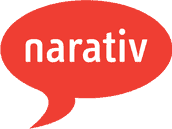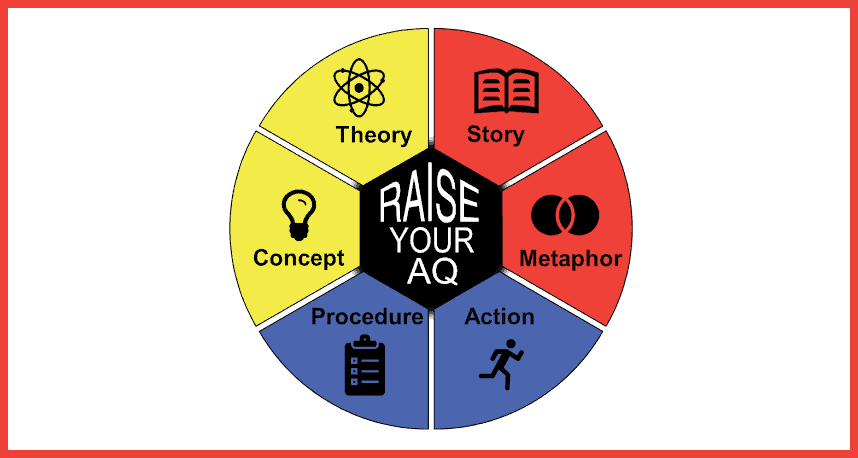Jerome and Julienne recently had the chance to speak with the creator of Answer Intelligence (AQ)™, Dr. Brian Glibkowski on a Story Talks podcast episode. He is a professor of management and an expert in the field of questions and answers.

Questions and knowing how to answer them are key in all aspects of life—and especially at work. Dr. Glibkowski believes questions are so important that he has devoted his life to studying them.
His journey began as a doctoral student. After a conference with the top researchers of the world in management and organization behavior, he learned many of them researched what they felt they were bad at.
It got Dr. Glibkowski thinking. What was he bad at?
He thought on this and settled on the fact that he wasn’t very good at communication. He was articulate, but found “people just didn’t understand [him].”
This line of questioning eventually led Dr. Glibkowski to his research into questions and, ultimately, to his research on answers. Through his studies, he has derived a framework of six answer types: story, metaphor, theory, concept, procedure, and action.
The Framework
Dr. Glibkowski’s most well-known research focuses on golf instructors. He gave two reasons for this:
- They are experts who are often in the upper half of the 99th percentile of their profession.
- They communicate with a wide range of clients, from those who are grabbing a club for the first time to professionals.
Dr. Glibkowski wanted to understand how these professionals provide answers in these asymmetrical communication scenarios, and he went on to explain that this is important because we all experience these situations ourselves to some degree. We communicate with people all the time who are more or less motivated than us, more or less intelligent, and in general just different from one another. Each interaction requires us to tailor our communication. Golf instructors simply do this on a more extreme level.
Through his studies, Dr. Glibkowski addressed the fundamental questions of communication:
- Who
- Where
- What
- When
- Why
- How
He explained that each one is unique and should be answered differently. In his discussion with Jerome and Julienne, Dr. Glibkowski focused on three questions specifically: What, How, and Why.
He said that the question of What can be answered with metaphor, the question of How is best answered with procedures, and Why is answered with story. He stressed that there was no hierarchy of questions; it is a circle. Like the knights of the round table, they are all equal.
Dr. Glibkowski’s Answer Intelligence Diagram
Procedure & Story
As the podcast continued, Dr. Glibkowski explained one particular aspect of the Answer Intelligence diagram: procedure.
Procedure, he explained, is like the steps in a recipe. It answers how you will accomplish a task. He expressed that many times storytellers in business, such as sales personnel and leaders, get so caught up in the storytelling that they forget about the procedure or details that will accomplish their goal.
To illustrate this, Dr. Glibkowski used an example of someone asking a store clerk where to find a candy bar. The first step is to realize they probably don’t care where it is; what they really want to know is how to get to the candy bars. They want directions. They want a procedure; for example, “Go straight to the third aisle then turn left.” If the store clerk instead responds with a story the person looking for a candy bar may be disappointed. This shows us that for stories to have the greatest impact they must be delivered at the right time. As Dr. Glibkowski said later on, “Stories are extremely powerful. And now if you combine that with the right moment…Boom!”
Where stories are most optimal is when answering a Why question. Dr. Glibkowski explained a situation that many businesses have faced and are still facing, that of employees returning to the office. Someone will ask, “Why are we coming back to the office?” This is an opportunity to tell that story. Why is tied to purpose and vision, to motivation and engagement. It’s how you motivate people to do the How, and stories are the best way to answer that question.
But even when your primary question is Why, it’s important not to forget to include procedure in your answer. In the example above, a lot of people are going to wonder “How are we going to do this?” which is best answered with a procedure. Dr. Glibkowski said it doesn’t have to be super specific, but an outline can be invaluable. This shouldn’t detract from the story. In fact, if done well, it will enhance it, increasing your credibility.
But not everyone is prepared to tell stories; they may have the procedure but haven’t found a good way to motivate others to do it. They can tell you How to accomplish the task but not necessarily Why you want to. So, how do you strengthen that side of communication? A good place to start is with the metaphor.
The Magic of the Metaphor
Dr. Glibkowski’s advice for analytical people who have the details but are more reserved is to “Start with the answers you really care about. Find the story in that procedure, and now you are passionate about [the story].”
He expressed that one way to develop a story is to start with a metaphor. Short and sweet, a metaphor makes it easy to connect the dots. And if you look at Dr. Glibkowski’s diagram (above), metaphor and story are next to each other in the circle. Both are emotional. Story answers Why and metaphor answers What.
Finding the Metaphor in Your Story
To explain, Dr. Glibkowski used the example of being asked ‘What is leadership?’ He said as a concept leadership is inspiring people and holding them accountable. Then he brought in a metaphor to explain that answer.
“It’s like two ropes,” he held up two fingers then moved them closer together wrapping them together like a rope. “My leadership style is like two ropes and when they’re combined together they are even stronger. That’s how I lead: I inspire and hold people accountable.” He then expressed that he could continue the thought by telling a story.
Metaphors are easier to tell than a full story. They are compact and give us a visual. Story is all about the senses, whereas metaphor gives you a snapshot. It’s a little burst of detail that can lead us into our story and strengthen it.
But, as with procedure, in all situations it is key to focus on the audience and what they are really asking.
Answering the Right Questions
Sometimes the real struggle is identifying the questions being asked. Jerome shared his own experience of preparing to go on a business trip and explaining to his young son that he wouldn’t be available to help him get to bed for a few days. Jerome would try to explain why he needed to go, but it was only once he explained how things would work with him gone that his son began to come to terms with it. He was trying to answer the Why, but his son was asking How.
In response, Dr. Glibkowski expressed the importance of knowing what you are being asked. Your audience could have explicit or implicit questions, but if you want to effectively answer them you need to be aware of them.
Who is the Answer Intelligence (AQ)™ Framework for?
We’ve heard stories of family and business, so who is this really for? Dr. Glibkowski’s answer was that it’s for everyone. He said it’s useful anywhere you have “important conversations…It applies everywhere.”
Dr. Glibkowski urged listeners to start with the most important conversations, and shared his own insight, “You are the questions you ask and the answers you provide.”
If you are interested in learning more about Dr. Brian Glibkowski and Answer Intelligence you can visit his company’s website or check out his book, Answer Intelligence: Raise your AQ. The website offers a free explore AQ assessment that will give you a pdf report on AQ. Dr. Brian Glibkowski is also available on LinkedIn.
To listen to the podcast you can go here, and if you would like to learn more about Narativ and how storytelling can strengthen your communication, feel free to visit us here.




